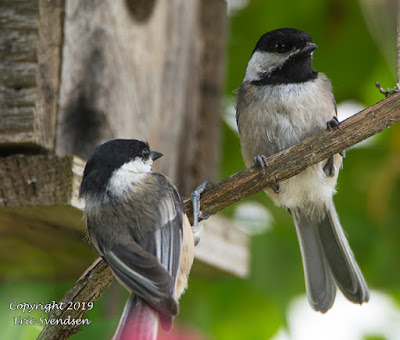Bullfrogs - the scourge of the wetland.
 |
| The American Bullfrog. A terror among us. |
Bullfrogs are originally from eastern North America. They never made it past the prairies before man showed up due to the deep cold and lack of wetlands. Bullfrogs were easy to raise, and people had an affinity for their legs. Young bullfrogs in the form of tadpoles could also be moved unknowingly if they happened to get trapped in a live shipment of fish; upon arrival, they were released by people who wished to treat them humanely. Then there were those that obtained bullfrogs for the purpose of intentionally releasing them into the wild, hoping to later harvest them for themselves or the restaurant industry.
Whatever the reason, they have been introduced into many aquatic ecosystems where they never previously were. Then they did what all animals do when given an opportunity to thrive; they breed. A female bullfrog can lay upwards of 20,000 eggs. You can imagine that it wouldn't take long for a single pair of these large amphibians to quickly populate a region. Even if only 10% survived to breeding age, those 1000 females could then continue the process of producing new generations until they number in the millions.
This is the first area of harm; they breed quickly and can out-compete native species for food and space. The young are ravenous herbivores. Once they mature into adulthood they become even a greater menace. Adult bullfrogs are carnivores and will eat anything which is just slightly smaller than themselves. Snakes, frogs, salamanders, mice, insects, young birds, and the list goes on. They themselves become prey for other creatures, but not before they have decimated the environment.
The real tragedy though is that they are just getting started. Introduced in California originally in the early 1900's, they have been making their way north. Each new ecosystem they conquer sees indigenous species decline to an endangered or extinct level in that region. Now that the devil has been released from the cage, it is impossible to prevent their spread. This is another great example of human ignorance destroying the natural world.
Thanks for reading. www.ericspix.com



Comments
Post a Comment